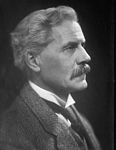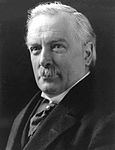1929 UK general election
|
|
|||||||||||||||||||||||||||||||||||||||||||||||||
|---|---|---|---|---|---|---|---|---|---|---|---|---|---|---|---|---|---|---|---|---|---|---|---|---|---|---|---|---|---|---|---|---|---|---|---|---|---|---|---|---|---|---|---|---|---|---|---|---|---|
|
|||||||||||||||||||||||||||||||||||||||||||||||||
|
|
|||||||||||||||||||||||||||||||||||||||||||||||||
|
All 615 seats in the House of Commons 308 seats needed for a majority |
|||||||||||||||||||||||||||||||||||||||||||||||||
| Turnout | 76.3% ( |
||||||||||||||||||||||||||||||||||||||||||||||||
|
|||||||||||||||||||||||||||||||||||||||||||||||||
|
|||||||||||||||||||||||||||||||||||||||||||||||||
| 1923 election • MPs |
| 1924 election • MPs |
| 1929 election • MPs |
| 1931 election • MPs |
| 1935 election • MPs |
The 1929 United Kingdom general election was held on Thursday 30 May 1929, and resulted in a hung parliament. It was the second of four general elections under the secret ballot and the first of three under universal suffrage in which a party lost the popular vote (i.e. gained fewer popular votes than another party) but gained a plurality of seats—the others of the four being 1874, 1951 and February 1974. In 1929 that party was Ramsay MacDonald's Labour Party, which won the most seats in the House of Commons for the first time, but failed to get an overall majority. The Liberal Party led by David Lloyd George regained some of the ground it had lost in the 1924 election, and held the balance of power.
The election was often referred to as the "Flapper Election", because it was the first election in which women aged 21 or over were allowed to vote, under the provisions of the Representation of the People Act 1928.
The election was fought against a background of rising unemployment, with the memory of the 1926 General Strike still fresh in voters' minds. By 1929, the Cabinet was being described by many as "old and exhausted".
...
Wikipedia



